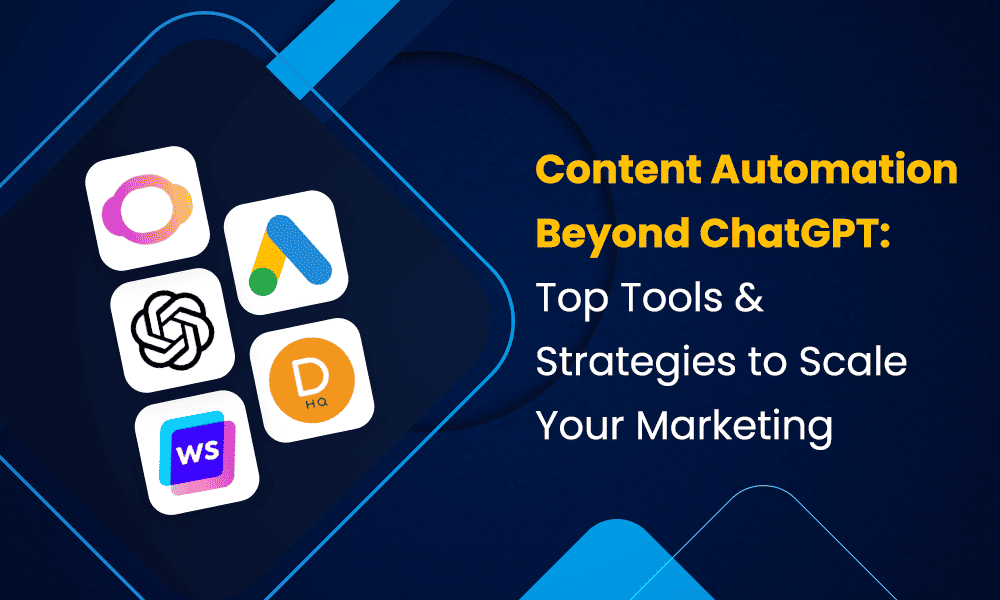Due to the expansion of online marketing and the need to reach a more global audience, creating proper, targeted content has become increasingly crucial for business owners.
While it may seem easy, creating and deploying content that meets users’ needs can be daunting. How can you automate this process while still efficiently handling other business operations? The question “What is content automation?” comes in here.
In this blog post, we will discuss the following:
- What is content automation
- 12 content automation tools to scale your marketing efforts
- How you can automate content for your business
- Different automation tools and their pricing and
- Benefits of content automation tools
Table of Contents
What Is Content Automation?
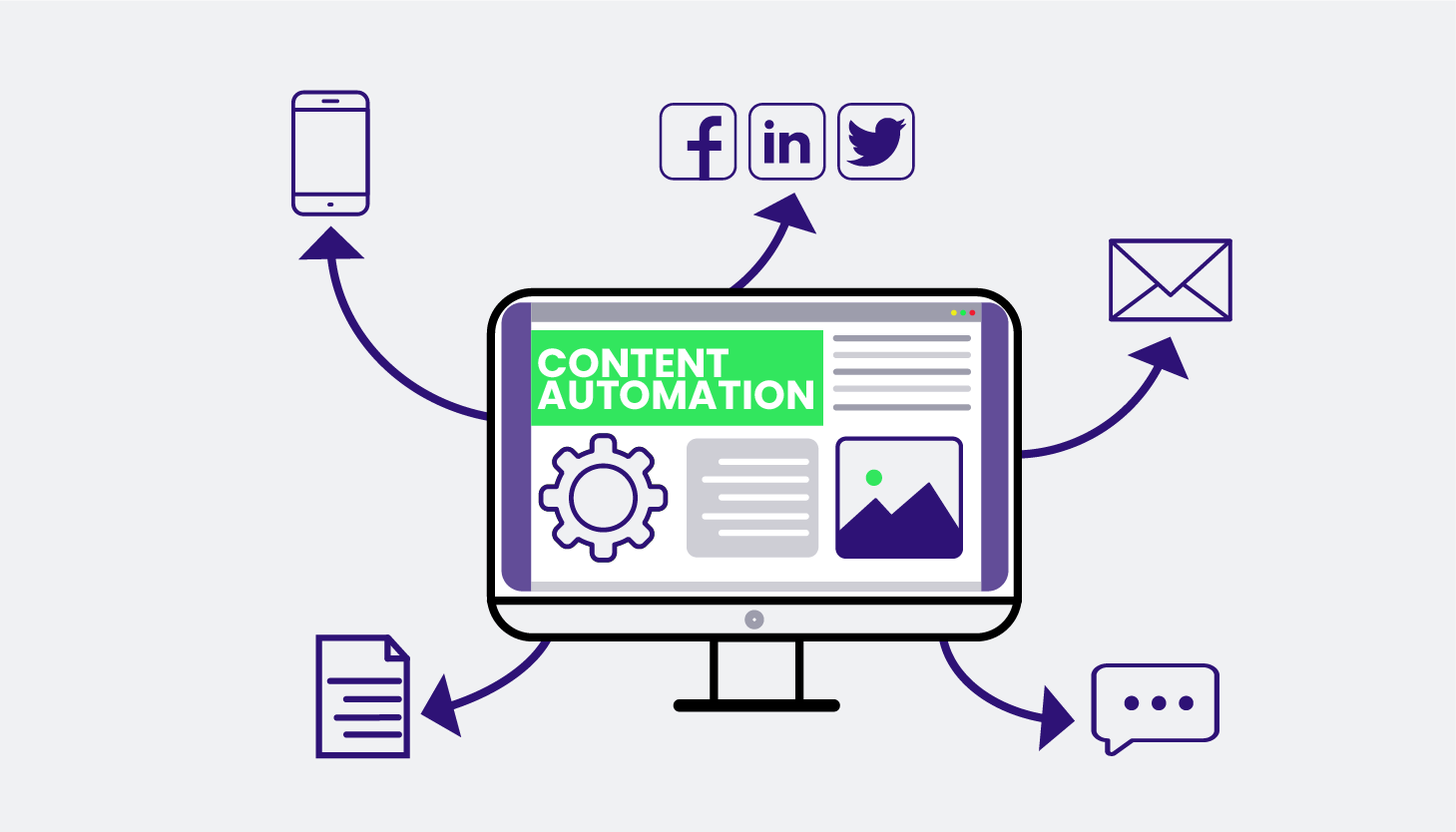
A simple answer to “What is content automation?” is that content automation is a smart solution to increasing efficiency in creating content for your business.
However, a more technical answer will be that content automation is the use of tools and computer software to plan, generate, publish, optimize, and review audio, visual, written, or mixed-media content.
As a business owner with an online platform, content is the life force of your digital presence. While it makes sense to devote time and resources to creating content to drive your business forward, this process can become repetitive and unnecessarily time-consuming.
By delegating iterative tasks while maximizing results, content automation significantly reduces the time, energy, and resources you would otherwise direct to the content creation and distribution process.
Content itself is any informational material you post online about your business or platform. It is how you engage your audience and constantly inform them about what you do.
It may be audio, visual, or written and can be deployed through different platforms, such as your website, social media handles, blogs, or emails. You can also find brand content in physical media, such as billboards, pamphlets, and banners. Content determines how you approach your target audience and how they respond to you.
While the tools required for this automation process are often not free, they still save you significant costs, not to mention invaluable time. The following headings in this post will show you how to implement the tools in your content lifecycle while highlighting the best tools and the considerations to be made when selecting these automation tools.
Benefits of Content Automation
Automating your content creation process is a hail mary since content creation can be time-consuming. Here are eight benefits of content automation to know.
Do more in less time
The primary essence of automation tools is to save time. You save time by:
- Performing keyword and content research
- Generating the required content
- Scheduling content for upload
- Repurposing and redistributing existing content
Also, you save time by using existing templates instead of designing the content structure and content from scratch.
More creativity
When your content and marketing team spends less time on mundane tasks, they have more time and resources to be creative.
Primarily, these content generation tools provide templates and advanced tools that you can explore to find more creative ways to present otherwise basic content. For instance, instead of just presenting text, you can input it into a design template and add animation.
Maintain brand consistency
With automation tools, you maintain content consistency in form and schedule.
Consistency in form includes consistent brand language, tone, language, style, aesthetic, and overall vibe. For instance, you can use visual automation tools like Canva to create a brand pack that maintains the same band color and font styles.
Maintaining brand consistency is important because customers are more likely to resonate with and respond to brands that maintain some level of consistency as it hints at authenticity.
Read also: How To Build The Perfect B2B Marketing Automation Strategy
Maximize peak periods
Automation tools help you to keep to schedule and maximize peak periods by posting content across different social media platforms at a scheduled time, in line with a pre-set posting calendar.
For example, depending on your target audience, there are usually peak periods on Instagram where your followers are most active and present you with the best opportunities for a wider reach.
Instead of struggling to meet such peak times, you can create a schedule for these peak times and set the posts to go out at that specific time.
Alternatively, instead of posting manually on platforms, you can use an automation tool to post simultaneously on social media pages linked to one platform, saving you the time and resources that would otherwise have been spent on content duplication.
Seamless workflows
You get a more seamless workflow when you can sort your content through all the steps from generation to distribution in one tool.
Additionally, collaboration with your teams is made easy as these automation tools allow multiple access so team members can add their input from different ends. More importantly, you can store this content in different formats in a repository and tag them accordingly.
Improves marketing efforts
As a marketing professional, you can maximize your marketing strategies through automation tools as they help you better generate leads. For instance, when a visitor interacts with your content online, these tools can send automated messages to interact with them immediately.
Additionally, using content automation tools as a marketing professional gives you data-driven insights into what does and doesn’t work as you observe competitor pages and past performance metrics.
You can use the analysis and tracking tools to determine what products customers prefer and the additional services they respond to. Following these insights allows you to make data-backed decisions when planning marketing strategies, thus yielding improved results in marketing.
Reduce spending
Every step of the process, from content research and generation down to performance analysis, is often a role that requires hiring experts. For instance, you would need content creators and social media managers to monitor your accounts and post content on the different content handles.
However, automation tools make the process more affordable as they handle a chunk of that work, such that you now require fewer people to handle the process.
Improved efficiency
Content automation tools allow you to optimize content creation to yield more results. For instance, using analytics automation and generation tools allows you to research and write content that is more ikey to resonate with your target audience while giving reports on how they respond instead of attempting a trial-and-error system.
Also, you gain a competitive advantage by learning fast to respond to changing customer preferences and market conditions. Finally, you can segment your customers based on data from customer behavior and then create content for these segments accordingly.
Read also: A Short and Sweet Guide to Content Marketing Automation
How To Automate Content for Your Business
Learning how to automate the content process first requires understanding the different processes involved in content creation. We will discuss the automation process in line with these generation stages, and they include the following.
Content research

As the first step in the content creation lifecycle, content research refers to consulting online sources to determine the content to create and the direction best for pushing your business.
Content research will primarily include topic identification using Natural Language Processing (NLP) technology to highlight the most relevant topics that resonate best with your audience.
By conducting content research, you streamline your topic to include keywords and media that suit your target audience. Although content research tools do not outrightly prepare the content for you, they help perform curated research to aid your content generation process.
These ideation tools help you develop ideas you want to build upon or give you new content ideas. For example, to create content around funnel analysis, you can search with these tools to find the following:
- High-performing keywords and topic clusters.
- Sites with high traffic.
- Insight on competitor data and content trends.
All this information helps you know how to tailor your content for better results and what to feed into your content generation tools.
Content generation
As a marketing professional, you know firsthand how strenuous this process can be. These tools help augment human efforts in the content creation process and present them across platforms.
As the most crucial step in content generation, content creation tools are at the top of the list of content automation tools to consider. With these tools, you can generate various types of content ranging from sales copies, ads, headlines, and meta descriptions to email content, social media captions, and blog posts.
More importantly, generation isn’t restricted to texts alone. You can get images, videos, or audio that suit your search. For instance, you can use Google’s duplex system to create audio, Quill for image creation, and Wordsmith to turn insight documents into text.
These tools can also perform generation from basic tasks such as word prediction to even more full-scale tasks like working with select input keywords to create a body of work.
Content review and editing
After content generation, review and editing are critical to ensure that the content is consistent with the brand tone and is factual.
These tools make it easier for your marketing or content team to do this efficiently, ensuring the content is free from grammatical or contextual errors before posting.
Content review and editing tools are most effective for written content. Hence, it’s best to have your content in a document format and then review it with these tools before putting it in other formats, such as graphics or video.
These tools also check for plagiarism and ensure compliance with relevant regulations such as copyrights and licenses.
Content personalization and sharing
Content generated can only reach potential customers after you have shared them across your digital channels. The sharing process can be arduous because these platforms may require different content formats and upload requirements.
You may also need to set up ads to push the content and follow-up posts. This is why you would require automation tools for content distribution.
For instance, after creating a newsletter or blog for your business, you can schedule a post time or send it instantly to different channels by clicking a button. Additionally, you can observe and manage social media accounts from a dashboard to maintain brand consistency and aesthetics using content personalization and sharing tools.
Content repurposing
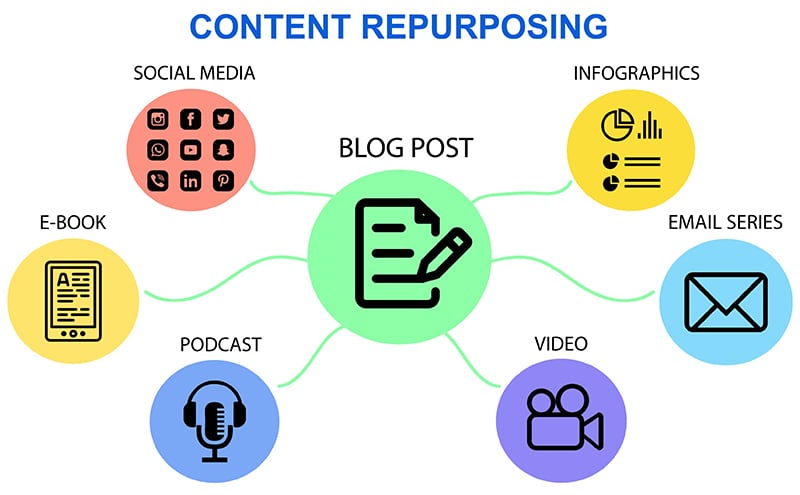
Repurposing your content allows you to make the most of it. If you require more creative ways to repurpose the content or even more technical skills to transform a document to, let’s say, a graphics design or an animation. Automation tools allow you to perform this function in far less time and even seamlessly.
They allow you to spin a piece of content in different formats so that they don’t seem repetitive and are plagiarism-free. More often than not, automation generation tools include repurposing features.
Content analytics and tracking
After posting your content, you want to know how they are doing, right? Aside from checking the number of likes, impressions, and follows you get on these posts, there are more advanced tools that enable you to get a deeper insight into performance.
Optimization and performance tracking tools monitor deployed content to evaluate its effectiveness in reaching the target audience and influencing their actions.
For instance, these tools track performance metrics such as bounce rate, website traffic, click-through rate, or total leads. Depending on the tool, you can gather performance metrics across web pages and different platforms to understand how the content performs on these platforms.
Analyzing and tracking your content performance is necessary to improve your content strategy with data-driven insight. Additionally, they help you generate new content ideas as you better understand customer preferences and the content they are more inclined to respond to.
Read also: 5 Reasons Content Marketing Is The Future Of Your Business
12 Content Automation Tools for 2023
It’s important to know specific tools for different content automation aspects. While there are general tools that can perform different functions across the board, it’s good to identify specific tools and their unique strengths for your automation process. Some efficient content tools and their specific uses include the following.
Computer-generated written content creation tools
- ContentBot.ai
- ChatGPT
- Writesonic
Keyword and content research
- Google Ads
- LSI Graph
Content Scheduling, publication, and distribution tools
- DivvyHQ
- Coschedule
Automated content templates and management systems
- Extensiv
- HubSpot Content Management System (CMS)
Content automation analytics tool
10. Moz
General content automation tools
- Digizuite
- Quark
Let us explore them in detail.
1. ContentBot.ai
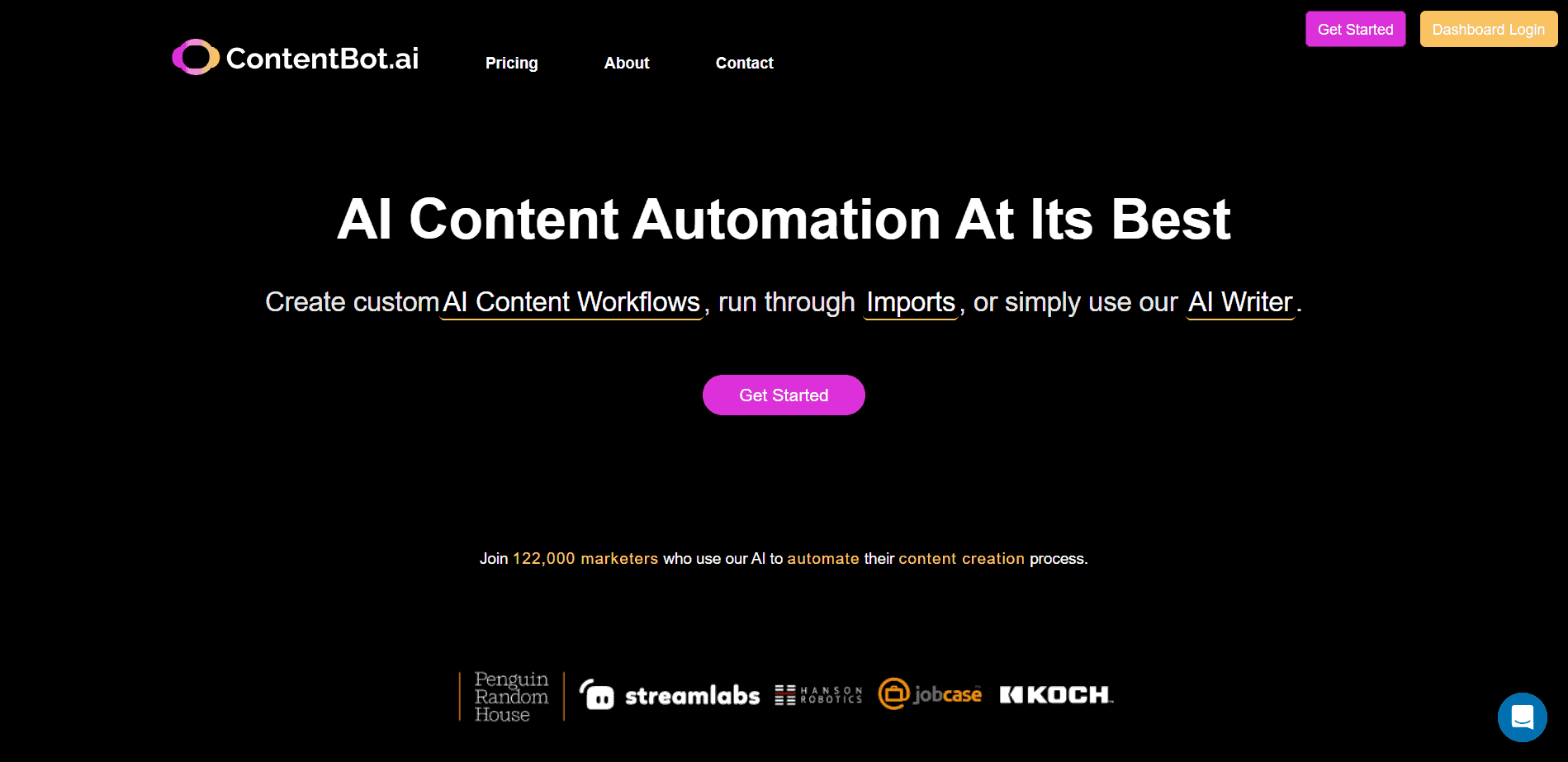
ContentBot.ai is a content generation platform that provides complementary features, such as an in-built SEO tool for real-time insights. The platform is user-friendly and produces engaging and quality content. It also generates content, from captions and blogs to newsletters and landing pages.
Some of the significant features of ContentBot.ai are as follows.
- Paraphrasing tool: This allows you to modify your written content for brevity and accuracy.
- SEO insights: Aside from being a content creation automation tool, ContentBot.ai also provides you with analytics functions to help the article rank high in search engines.
- Results at intervals: Instead of giving you immediate generation results, you can input a command in this tool to send you search results at intervals. This feature is handy as it could double as a content scheduling tool.
Pricing
Four pricing plans are available to ContentBot.ai users: Prepaid, Starter, Premium, and Premium+. Each package comes with its unique features.
- Prepaid: This plan costs $1 for 1,000 words, and the additional features in this package are a paraphrasing tool, AI writing, and unlimited seats.
- Starter: Cost $19 per month for up to 50,000 words. Additional features in this plan include InstructBot and the features available in the prepaid plan.
- Premium: This plan starts at $59/month and is great for startups and marketers. In addition to the features in the starter plan, users on this plan package get access to priority support, plagiarism checker, imports, and AI workflows.
- Premium +: Starts at $99/month for 400,000 words and unlimited workflows.
2. ChatGPT

ChatGPT is one of the most popular content-generation tools in recent times. This tool leverages large language models (LLMs) to receive input prompts and translate them to proper form written content. The significant difference between ChatGPT and other generation tools is that it is built to give conversational answers that mimic more human responses.
Essential features of ChatGPT are as follows.
- Code writing: Beyond being a content generation tool, you can leverage ChatGPT to write and debug codes. While this feature may be less helpful to you as a marketer, you can leverage it to perform more advanced functions.
- Content outline and keyword research: With ChatGPT, you can conduct keyword research and generate content outlines for your different content ideas.
- Reinforcement Learning with Human Feedback (RLHF): This feature in ChatGPT allows it to not only give a conversational response but also respond in line with the prompts you give it. The more information you include in the input, the more likely it is to streamline the response in the desired direction.
Pricing
ChatGPT has two pricing plans: The free plan and the Plus plan. They both come with unlimited words.
- Free plan: Features in this plan include the GPT-3.5 model, standard response speed, and regular model updates.
- Plus plan: This plan costs $20/month and includes access to GPT-4, faster response speed and plugins, and advanced data analysis.
3. Writesonic
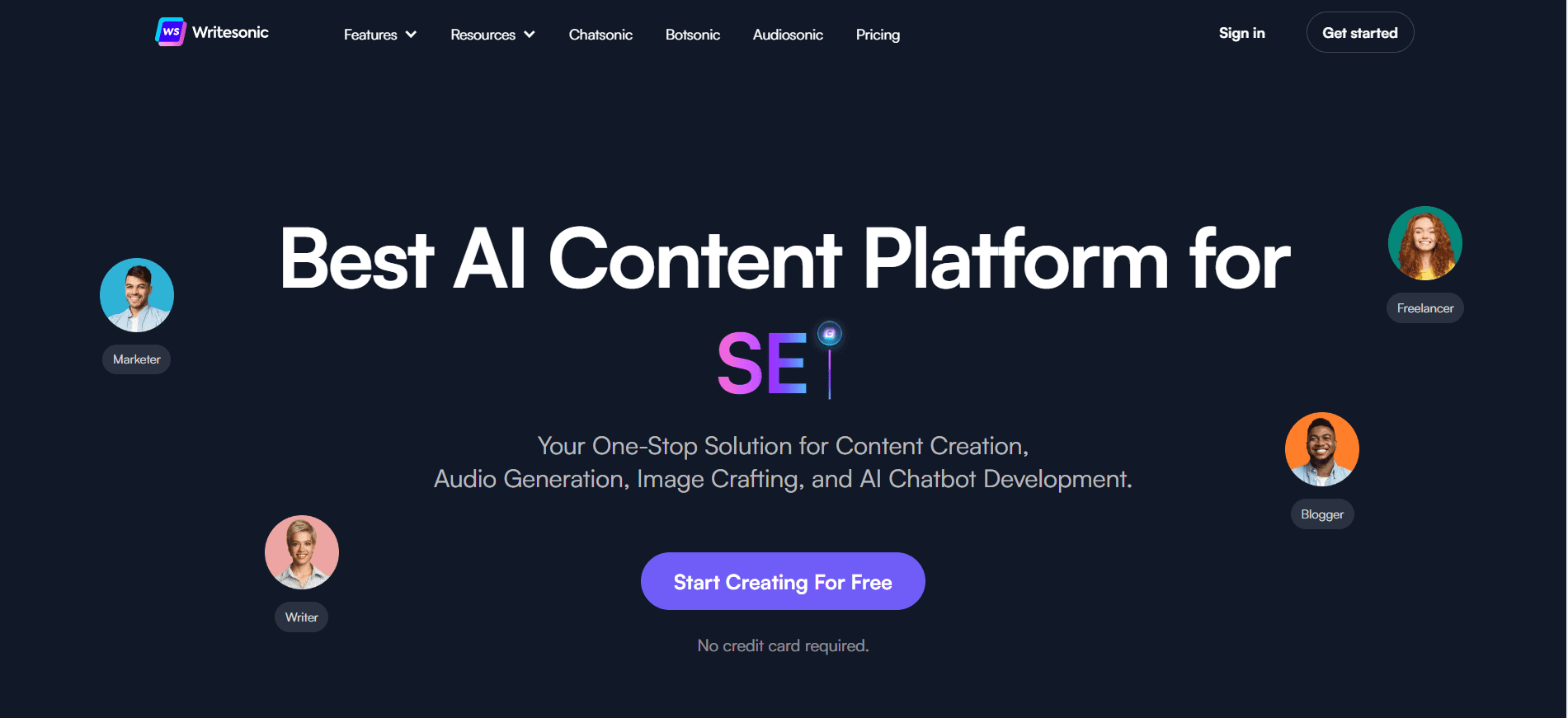
Writesonic is an AI-powered content writing and image generation platform for writing short or long-form texts such as product descriptions, website copies, blogs, press releases, and articles.
A major feature, however, for this tool is that it can help you generate keywords that are better suited for your target audience and then build content around it. More interestingly, it has features to review and publish the generated content. Amazing yeah!
Some of the significant features of this tool are:
- Plagiarism checker: With Writesonic, you don’t have to worry about plagiarized content as the tool assists in running checks to ensure that you don’t have proprietary issues when publishing generated content on any online platform.
- Text generation and summarization: As a content generation platform, you can either use this tool to author a body of work from start to finish or write it yourself with AI-powered help. In either case, the tool is instrumental in giving text prompts that can be useful if you are experiencing writer’s block. Additionally, you can summarize a generated text to fit a word limit and get out the major points.
- Tone checker: This feature, while seeming inconsequential, is very important, especially if you are looking to develop a brand tone over time. This feature makes Writesonic a unique content generation tool because few tools have it.
Pricing
Writesonic has four pricing plans.
- Free trial: The free trial option on Writesonic allows you to generate 10,000 words for one user. In addition, you get access to AI templates, integration with Zapier, and over 25 languages.
- Unlimited: For $16 per month, you have unlimited content generation, with complete article rewriter, browser extensions, and Sonic editor, in addition to the features in the free version.
- Business: This pricing option is best suited for agencies and businesses as it pays attention to brand voice and provides priority support, bulk processing, and high-quality image generation, in addition to the features in the unlimited plan. For this plan, you can choose the GPT 3.5 package, which starts at $12.67/month for 200,000 words, or GPT 4, which starts at the same price as GPT 3.5 but for 33,000 words.
- Enterprise: The enterprise plan is for large businesses with more advanced automation needs, such as SSO/SAML login, custom API development, dedicated account manager, and invoicing options. The pricing for this option isn’t fixed and would require contacting the sales team.
4. Google Keyword Planner (by Google Ads)
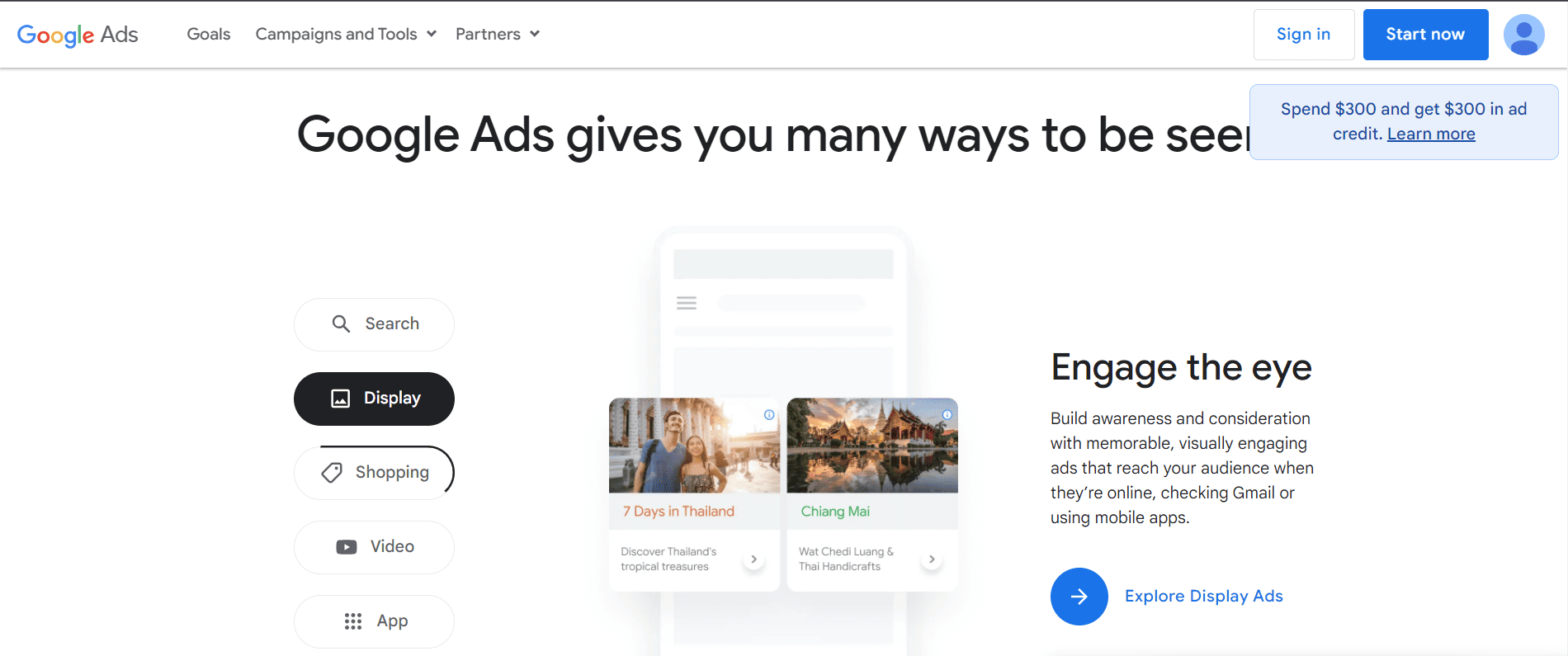
This free keyword research tool is available when you sign up for a Google Ads account. Google Ads automation tool helps you in content generation research by providing the following capabilities.
- Keyword research: With this tool, you find keywords related to your content topic or business, their search volume, and what it would cost to target them.
- Ad suggestions: This feature helps you provide ad suggestions under an ad group. You can find this feature when you go to the Recommendations group in your Google Ads account and check for the “Ads & Extensions” tab. This tool is helpful when you have insufficient ads for a particular group, as it also helps you maximize reach.
- Search Ads: Google ads leverage the app’s web-crawling software and insights from your website’s inventory to develop specified ads. It also uses your search query and the content of your web page to provide a destination URL to the ad it generates.
- Automated remarketing: This tool helps you to remarket your content to users who have previously engaged with the content. It is handy as it feeds the funnel marketing process by moving potential customers from just awareness to consideration.
Pricing
Google Keyword Planner is part of the package you get when you sign up for a Google Ads account. Getting started with Google Ads is flexible and budget-based (you can customize your desired features based on the amount you are willing to spend.)
5. LSI Graph
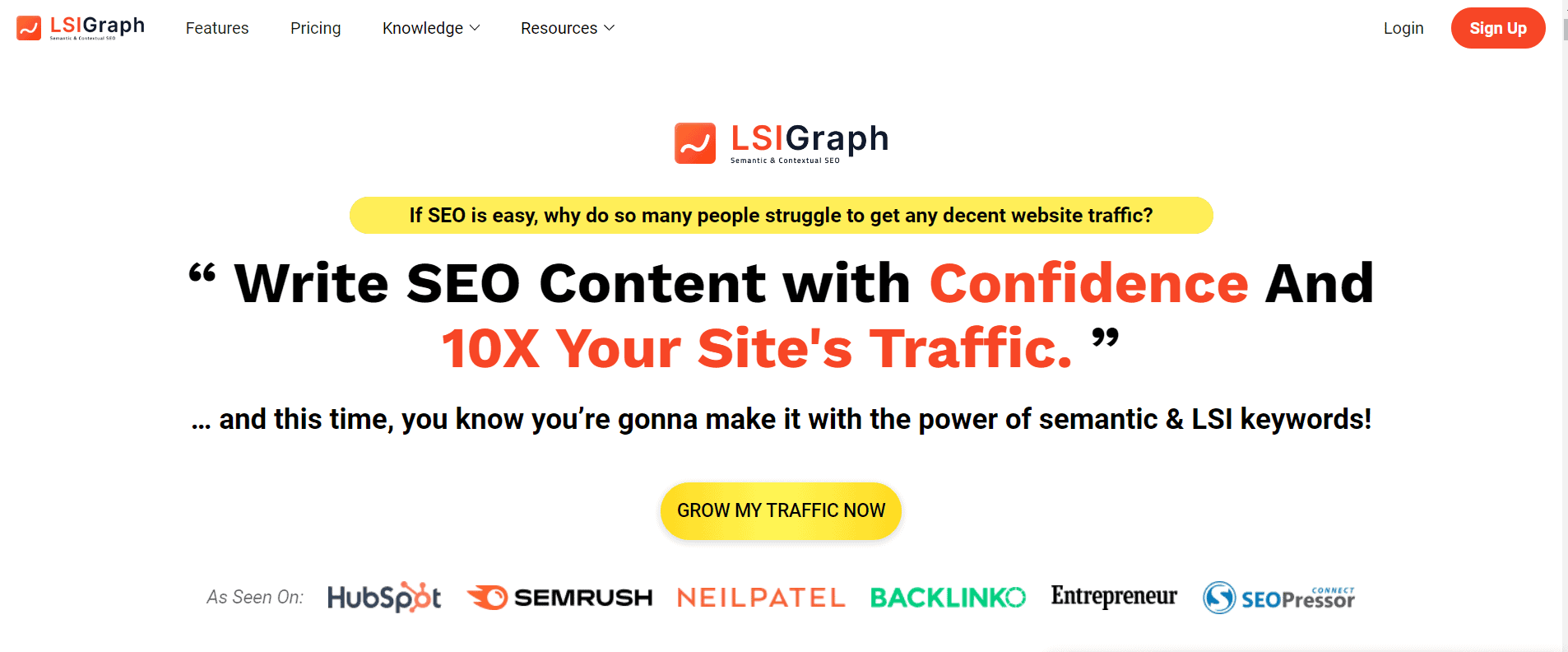
LSI Graph is a content research tool that helps improve SEO performance by generating keywords that are semantically related to the main keywords in your content.
For example, if your webpage article’s primary keyword is “real-estate,” then the Latent Semantic Indexing (LSI) keywords could be:
- Home buying tips
- Property listings, or
- Residential markets
Here’s another example: if your primary keyword is “SaaS business,” the LSI keywords will include:
- Cloud-based software
- Subscription model
These keywords are usually secondary to the primary keywords for your content and help search engines better understand your content. With these keywords, you can increase the reach of your content and improve relevance without overloading the content with keywords.
Some noteworthy features of LSI Graph include the following.
- SERP analyzer: This tool aids your keyword search process by giving you a detailed breakdown of the top-ranking pages related to your page and the topics so you can benchmark your keyword and content against them.
- Keyword and page intent: With the LSI graph, you get a detailed breakdown of what the web users want when searching a page. This feature gives you insight into the user’s thought process so that you can optimize your content to be more targeted.
- In-app summary: Weekly, you get a report on the different keywords used on the website and how they have performed or contributed to the page’s ranking.
Pricing
LSI Graph has different pricing options based on the number of months you want to subscribe for. The subscription options are as follows.
- 1-month plan: If you subscribe for just one month, you will be paying $43.99 per month.
- 12-month plan: You will save 43% for the twelve-month plan by paying $24.92 monthly.
- 36-month plan: Subscribing for a more extended period of 36 months decreases the price to $14.69 monthly.
Read also: What is an AI Email Writer? 8 of the Best AI Email Writers
6. DivvyHQ
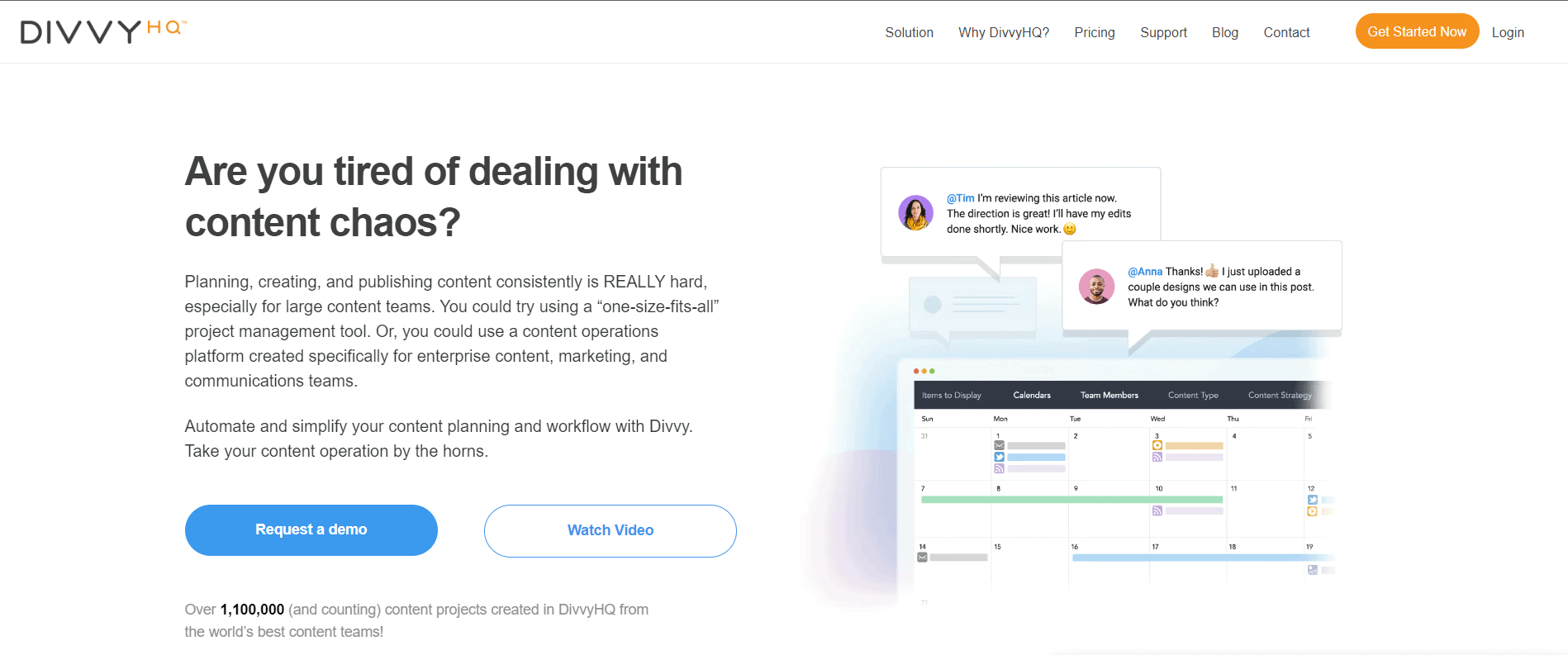
DivvyHQ is an automation tool that allows you to publish prepared content through diverse integrated channels. It also provides workflow templates and pre-configured dashboards for distribution channels such as emails, websites, and social media handles. The major features of DivvyHQ are as follows.
- Content management: Aside from being a publishing platform, you can leverage DivvyHQ in tracking interactions and performing brand management.
- Content scheduling: There is an in-built calendar for you to personalize and optimize with your team. This is in addition to automated workflows that you can use to assign tasks to your team members.
Pricing
DivvyHQ has three pricing options based on the features you want. You get a free trial on each plan to test the features and their compatibility with your content automation needs.
- Starter (Content Planner): This basic plan allows you to plan content and collaborate with your team for $39/month per user.
- Pro (Plan & Produce): While the plan has the features of the starter plan, it includes additional features like an advanced custom workflow, unlimited content storage, and unlimited shared calendars. This plan is for $79/month/user.
- Enterprise (Content Ops Suite): This subscription plan is suited for large teams that require more functionality and capability. The price for this plan is not fixed. You get a customized price when you contact their sales team.
7. Coschedule

CoSchedule allows you to manage, organize, and schedule social content on a single platform. You can plan, coordinate, and execute your entire marketing schedule and multi-project campaigns using CoSchedule.
Essential features of CoSchedule include the following.
- Automated scheduling and sharing: This feature enables you to schedule distribution time for prepared content in collaboration with a team. It also presents this schedule in a full calendar display so that you can track progress and KPIs.
- Headline Studio: The essence of this feature is to assist you in creating more optimized headlines. These headlines are generated based on gathered insights and data from web sources.
- Robust integration: You can integrate CoSchedule with Google Analytics, Calendar, and Asana.
Pricing
CoSchedule offers users different pricing systems, ranging from free tools to more customized team options.
- Free Calendar: This basic plan allows single individuals to get free calendars and link up to two social profiles. The free calendar also provides essential support and is best suited if you are looking for basic social media publishing.
- Social Calendar: The difference between the free and social calendars is that the latter is for individuals and teams wanting limitless publishing on social media handles. Even more, you and your team can connect to a maximum of 5 social profiles, with an option of an additional $5 per profile. Finally, this plan gives you access to reports, analytics, and more advanced social media automation for $19/month per user.
- Content calendar: The content calendar is better suited for large content teams who want to place all their social media handles and content in one calendar. It allows up to five users with ten connected social profiles and additional social features like guest user access, custom fields, and Kanban project view. The price for this plan isn’t fixed. You have to speak to the sales team to customize your pricing.
- Marketing suite: Like the content calendar option, the marketing suite is a customizable plan for marketing teams wanting to coordinate their marketing schedule on one calendar. You get a custom number of users and connected social media limit, with marketing-suited features such as sub-calendars, advanced audience targeting, a dedicated account manager, approval workflows, and custom permissions. You’ll have to contact CoSchedule’s sales team to get on board with this pricing plan.
8. Extensiv

Extensiv is a content management system that allows you to perform various functions, from using keywords to optimize search engine rankings to publishing multiple landing pages for your campaigns. Other features to look out for with this tool are as follows.
- Third-party integration: With this tool, you can integrate third-party websites and software applications to perform more advanced functions.
- Multi-channel order fulfillment: This feature helps you streamline your orders and fulfillment systems while maintaining a personalized workflow. It is beneficial if you run an eCommerce business with significant traffic.
Pricing
Extensiv provides four different pricing points with a one-month free trial with which you can evaluate the tool’s functionalities. These pricing points are as follows.
- Merchant: Priced at $39/month, this option is for single brands or merchants, allows you a limitless order volume, and requires no contract costs.
- EDI Merchant: The EDI Merchant pricing option is for merchants needing EDI connects. It also offers no contracts and order volume limits, with standard and premium order sources at $15 per month and $30 per month, respectively, and additional EDI order sources at $79 per month. This option is priced at $99 per month.
- 3PL: With this pricing option, in addition to unlimited order volume and the same rates for standard and premium order sources as the EDI Merchant option, you get no per-merchant fee. This option is for warehouse shipping for different brands, priced at $99 monthly.
- Master account: This option is mainly for software providers that require customer connections, as it offers unlimited merchant accounts, order volumes, fulfillment accounts, and white-label options. The price for this option is $199 per month.
9. HubSpot Content Management System (CMS)

HubSpot tool has a wide use case. From email marketing to marketing automation to a CRM tool. However, as a content management tool, you can create and personalize website pages for your visitors and host your business content.
Some HubSpot CMS features include the following.
- Customer Relationship Management (CRM) platform: Primarily, this feature allows you to interact with and understand how your customers and visitors interact with your business. It also allows you to create custom workflows around this client interaction.
- Custom domain connection: This feature allows you to connect a custom domain to your website so you can build organic search authority from the start.
- Web hosting: This feature enables you to host your website on HubSpot’s fully managed and optimized infrastructure that scales with your business.
Pricing
HubSpot CMS has four pricing plans: Free, Starter, Professional, and Enterprise.
- Free: Costs $0
- Starter: This plan starts at $25/month, billed monthly, and includes access to features like smart content, custom reporting, A/B testing, and SEO recommendations.
- Professional: Starts at $400/month, billed monthly. This plan gives access to website drop-and-drag editor, website themes, premium hosting, and local website development.
- Enterprise: Starts at $1,200/month billed monthly and gives users access to adaptive testing, custom objects, web apps, and memberships.
10. Moz
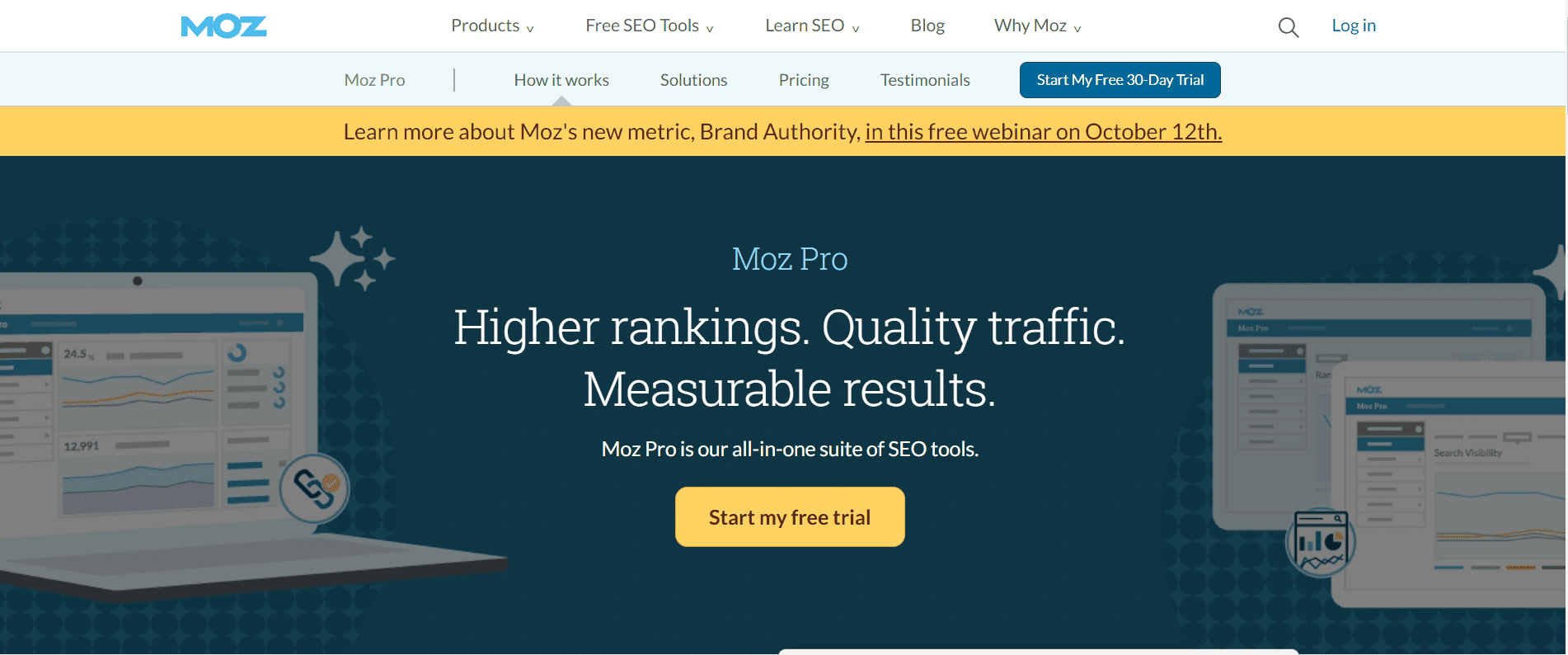
Moz is an analytics automation tool that provides curated features such as webpage optimization, keyword research, backlink analytics, rank tracking, and analytics reporting. Some features to look out for with this tool are as follows.
- Keyword search: Like most analytics tools, Moz provides a feature for finding keywords that are more likely to rank high and resonate with your target audience. However, this feature is more advanced as it extensively uses SERP data to navigate an online database and provide intuitive keywords.
- Periodic check-in: The tool performs periodic check-ins on your website to detect any issues you may have with integration or functionalities and then alerts you so that you can fix them in time.
- Rank tracking: With Moz, you track your page’s performance, compare it with how competitor sites rank, and get more in-depth insight into your ranking with your search visibility score, as you can see how you rank for keywords.
Pricing
Moz provides three different pricing options. While the Moz Local and Pro allow for free trial, you can request a demo for the STAT.
- Moz Local: This plan starts at $14/month and provides local reporting tools, social posting, and local reputation management. Other general functionalities include alerts of new customer reviews based on location, Google business tracking, and location-based social posting.
- Moz Pro: With this option, you get more advanced features such as keyword research, automated custom reports, technical SEO audits, and rank tracking per week. Additionally, you get general features like on-page SEO analysis tools, competitive research tools, and technical SEO site crawl tools. The plan starts at $99 per month.
- Moz STAT (search analytics): Subscribe to this option if your business needs high-capacity keyword tracking for its website. Major features of this option are granular data & segmentation, flexible app & API, daily rank tracking, and competitor intelligence. You also get Google Data Studio integration, Complimentary API access, and SERP tracking features. The plan starts at $720 per month.
11. Digizuite
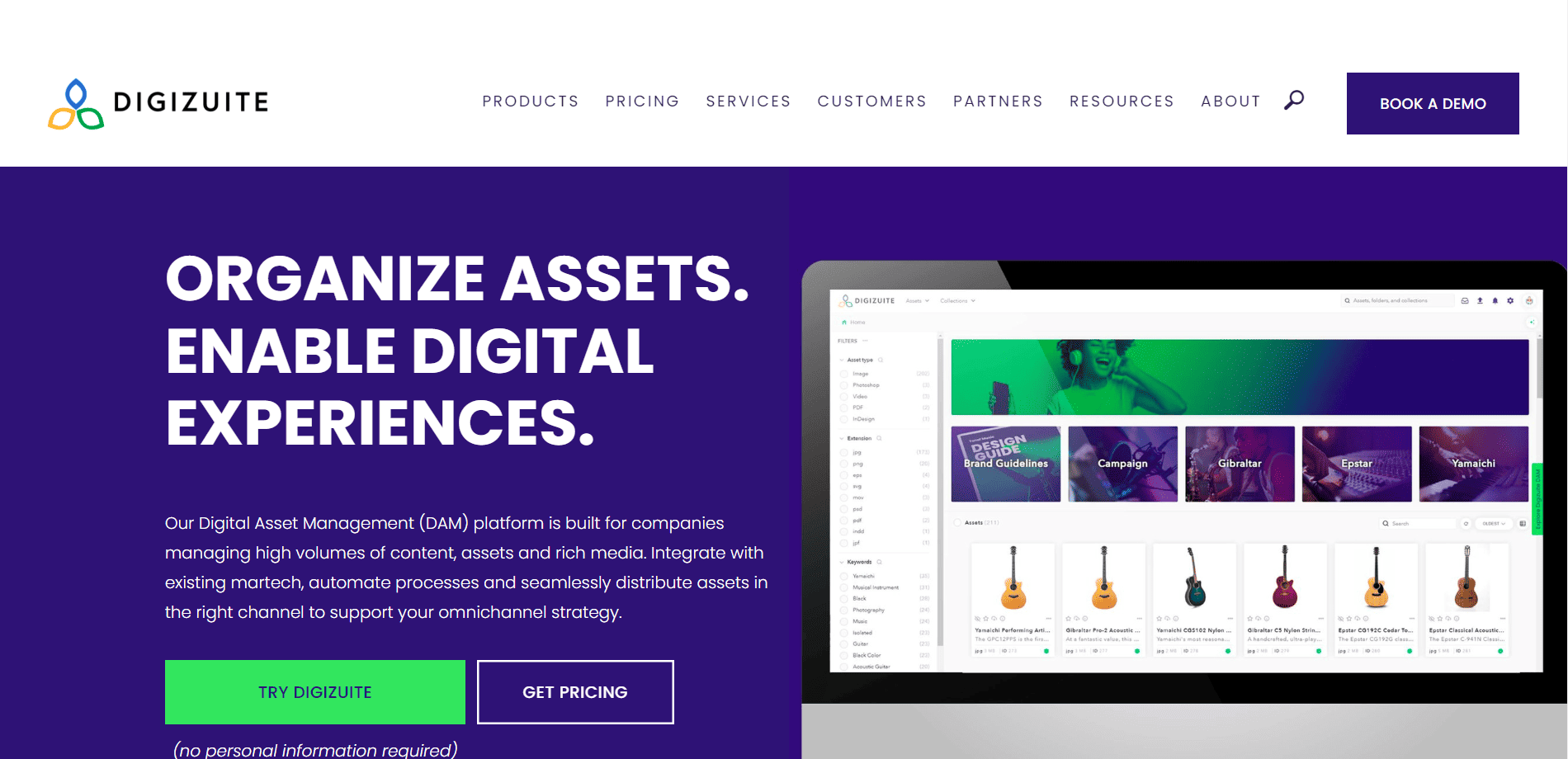
With Digizuite, you can automate the entire lifecycle from content creation to reviewing to distribution from a single platform. The primary features of Digizuite include the following.
- Content management: Aside from being a platform for creating content, this tool ensures that it includes the right keywords and tags and adheres to relevant terms. Additionally, it creates a check system where content only goes out when approved while flagging outdated content.
- Content distribution: After vetting and integrating relevant content, Digizuite distributes the content accordingly across multiple platforms.
- Content repurposing: The tool uses insights to identify the highest-performing content and presents ideas for repurposing them for more engagement.
Pricing
There are three pricing plans for Digizuite: Starter, Professional, and Enterprise. However, the prices for these plans are flexible, as you would need to contact the team.
- Starter: This standard package allows for five complete and fifty light users. It also provides rebuilt workflows for approval, asset rights management, centralized content repository, and video trimming, allowing you to configure your own metadata structure.
- Professional: The professional plan is a more tailored package for 20 full and 250 light users. Under this plan, you get automation configuration, custom metadata and rendition formats based on Digizuite templates, support in setting up other connectors from Digizuite Marketplace, Training of admin and super users, and a Dedicated Customer Success Manager. There are also optional connector add-ons for tools such as Adobe Premiere Pro, mobile applications, and marketing automation.
- Enterprise: The Enterprise plan best suits larger companies with more teams, such as IT and marketing, that want to integrate the tool with unlimited data. In addition to access for 100 full and 2,500 light users, you get custom metadata and rendition formats based on Digizuite templates, training for admin and super users, centralized content repository, custom connector development, AD integration (SSO), and optional connector ad-ons.
12. Quark
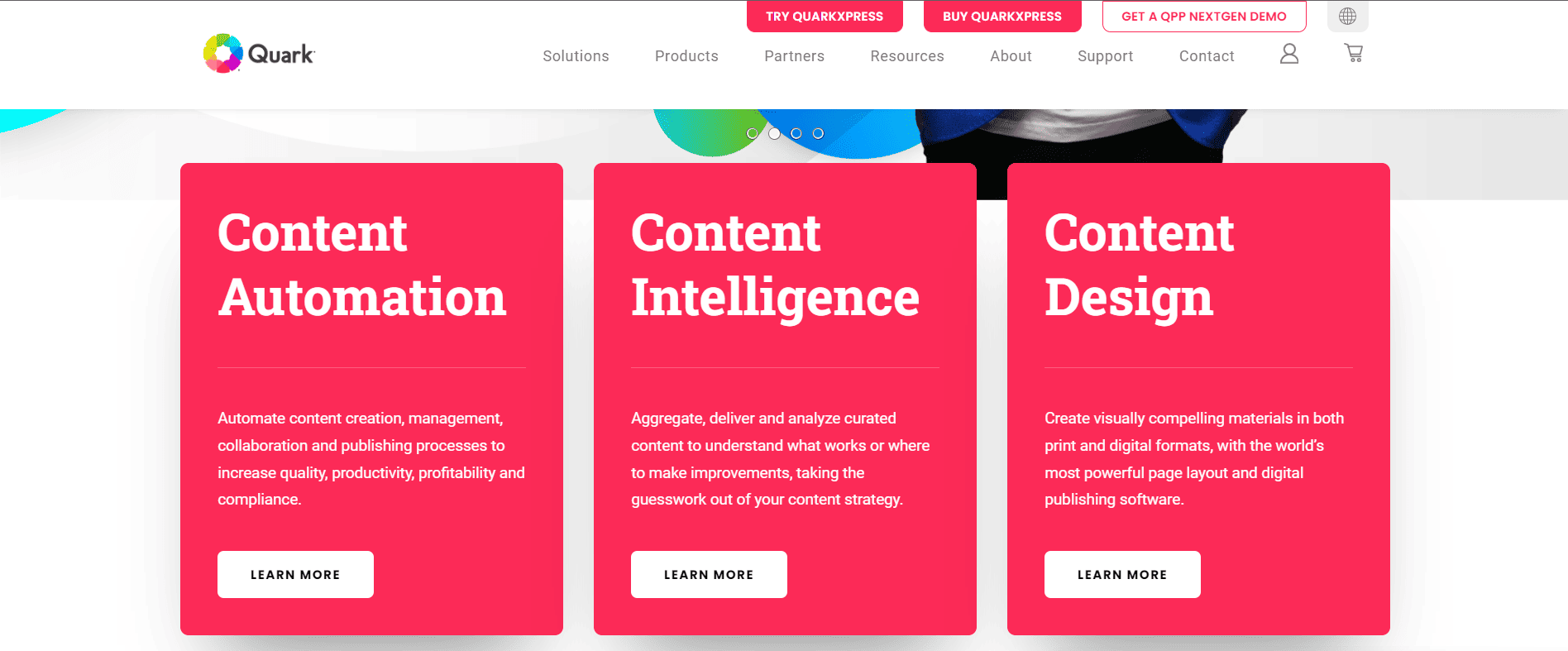
This automation tool provides different functionalities from generation to delivery, management, and optimization. It also provides template designs while allowing content structuring, approval, intelligence, and wide-spectrum publishing.
Some of the essential features of this tool are as follows.
- Smart content: This feature allows you to create written content on a platform similar to the word-processing platforms you use. This feature is possible through the use of a web browser.
- Content repurposing: Within Quark, you can repurpose content into different formats, such as chats, videos, tables, audio, or raw data.
- Smart integration: You can use Quark for the entire lifecycle or integrate it with existing tools. For instance, you can create your content with Microsoft Word, Excel, or PowerPoint and then integrate it through Quark XM Author. This integration allows for other functions, such as review and publishing. Otherwise, you can create with Quark Author.
Quark pricing
Quark has two annual subscription price plans.
- Prepaid annual subscription: This plan costs $220 billed annually.
- Perpetual license: This one-time purchase costs $489 and includes one year of software maintenance and support, after which you’d be billed $229 yearly for ongoing support and maintenance. However, you can cancel the support and maintenance plan at any time.
I’ve made a tabular summary here to give you a snapshot of each tool, with the core functions, pros, cons, pricing, and rating (G2).
| Tools | Function | Pros | Cons | Pricing | Rating (G2) |
| ContentBot.ai | Content generation | Flexible pricing, in-built SEO tool | Some grammar errors in the content | Starts at $19/month | 4.8 |
| ChatGPT | Content generation | Free version mimics human response | Some information is not accurate | $20/month (also has a free plan) | 4.7 |
| Writesonic | Content generation | Quick customer support response, user-friendly interface | Non-contextual responses from the chatbot | Starts at $16/month | 4.8 |
| Google Keyword Planner | Keyword and content research | Budget-friendly, great customer support | Unexpected costs | Budget-based | 4.2 |
| LSI Graph | Content research | Improves website ranking | Requires advanced team for efficient use | $14.69- $43.99
/month |
4.8 |
| DivvyHQ | Content scheduling | Robust integrations, effective in tracking interactions | No mobile access; can only be accessed on a desktop | Starts at $39/month | 3.8 |
| CoSchedule | Content scheduling and management | Integration with software tools like Google Analytics and Asana | Difficult software layout | Free-$19/user/month | 4.4 |
| Extensiv | Content management | More flexibility and functionality
|
Time-consuming setup | Starts at $39/month | 3.9 |
| HubSpot | Content management | In-built customer relationship management tool (CRM) | Steep learning curve | Starts at $25/month | 4.4 |
| Moz | Keyword research and analytics | Integration with platforms like Google Analytics makes data centralization while using the tool easy | It gets pricey for access to full features | Starts at $14/month | 4.4 |
| Quark | Entire content lifecycle management | Omnichannel distribution | Not very user-friendly | $259-699/month | 4.0 |
| Digizuite | Content management | Cohesive, integrated workspace | Steep learning curve | Customized pricing | 4.5 |
Factors to Consider for a Content Automation Tool
Making a new purchase from several options for personal products like new clothes or shoes can get confusing. Not to mention tools that can make or mar your business. Success for any tool and marketing efforts starts with making the right purchase decision.
So, here are factors to consider before deciding on a content automation tool.
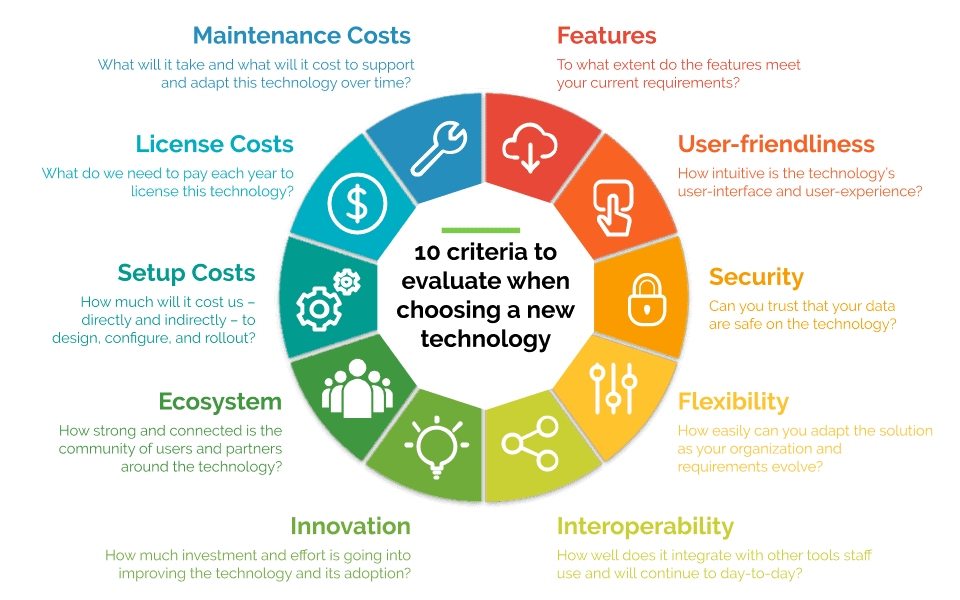
Security and privacy
Considering your content is a digital asset, it is best to decide on a tool that guarantees safety and privacy. The tools may also be automated to collect client data to function optimally. Ensure it collects such data in line with relevant privacy policies.
For instance, does the tool of choice give privacy notice and get consent before gathering client data?
Pricing
As much as automation tools can provide advanced functions to ease your marketing process, they should also help you streamline and reduce marketing costs. When choosing your automation tool, check the functionality against the pricing and determine how much money you would save by purchasing such tools.
Again, look out for the automation tool with the most value for your money. This could mean different things for different businesses.
For instance, $1,000/month for an automation tool may be cost-efficient for Business A and unthinkable for Business B based on needs, value for money, required features, and marketing budget.
Ease of use
The essence of automation software is to ease stress and not create it. So you know it’s a red fag when an automation tool has complex processes and is not seamless. You can attempt free versions of these tools before you subscribe to them.
Also, you should read online reviews on sites like Capterra or G2 to understand how they function.
Read also: Marketing Automation For Dummies: Top 10 Takeaways From The Classic Book
User experience and features
While different automation tools have different strengths, you should be more inclined to choose software based on your primary business needs.
For instance, if you are more concerned about content generation and optimizing it for search engines, you should prioritize a tool that performs in-depth performance analytics and can help you put the results of these analytics into action, such as Moz.
User support
Although an automation tool may be seamless, there may be features that you may be sleeping on because you need to learn how to leverage them. Additionally, you may encounter difficulties using advanced functions and require immediate help.
Using tools with responsive and timely customer support is beneficial.
Integrations
A major perk of using automation tools is your ability to integrate all the stages in the content lifecycle, from input, processing, and output. If you wish to get a more wholesome and seamless workflow, ensure that you choose software optimized for the highest level of integration.
Focus on whether the platform allows you to integrate with other major solutions, such as CRM software and marketing automation tools.
Content workflows
Content workflow refers primarily to how you organize your work. It also includes how a digital asset follows through different processes.
The important consideration you should make is to inquire if there are specific tools that allow you to sort these assets accordingly so that they are easily accessible.
Read also: Content Marketing Funnels: Unlock Your Brand’s Potential
Best Practices in Content Automation
Although automation tools have proven to be life savers to businesses and marketing professionals, some best practices are required for you to make the most out of these tools. Some of these best practices are as follows.
Get clarity on your content goals
There are too many automation tools at your fingertips, so it can get confusing to select one if you don’t understand why you need them in the first place. So, first, evaluate your content process and identify what parts you want to automate.
Also, consult with the marketing and sales team to understand their pain points and areas that they believe require more expertise and automation. Understanding these needs will then form the basis for your automation goals.
Identify tools that suit your goals
After determining your content goals, use that in determining the tools that are best suited for it. This involves identifying the tasks and processes that can be automated and matching them with the tools.
For instance, to create multiple landing pages that fit your marketing campaigns, you should think of Extensiv.
Map out a content strategy you can scale
The next thing to do is develop a content strategy that allows you to constantly develop fresh content ideas while leaving iterative tasks to the automation tools. Some factors to consider when developing this strategy are the target audience, what you hope to achieve, and the mediums for distribution.
Developing a content automation strategy helps you stay true to your marketing goals while developing KPIs to evaluate performance.
Focus on personalization
Personalizing your content automation process involves optimizing it for your target audience. Personalize this process using data on user preferences from analytical tools to determine the best mediums for posting and the best time to post.
Personalization is vital because it helps you determine where and how to direct the automation to tools to get the most engagement from your users. While at it, ensure that you pay attention to quality control so that the content matches the brand’s standards.
A perfect example is that some content generation tools may give inaccurate results or require additional editing. In this instance, you should run the content through review and proofreading tools such as Grammarly.
For an additional layer of quality control, add human input to cross-check the final content for factors that some AI tools cannot detect, such as context and brand tone.
Monitor performance and optimize
After publishing, use optimization tools to get insights that you can use to optimize subsequent content. Part of the optimization process may also include training your team on how to use the automation tools and the goals you are trying to achieve.
This step ensures that you can delegate even more as your team is part of the automation process and can make the best use of the tools available to them.
Keep working on improvement
Finally, it is important to keep in mind that automation is a continuous process. You can keep improving by scanning websites and pages to find the most relevant topics in niche areas that concern you and develop content around them.
The ultimate goal is to get to the point where your tools have been maximally utilized, and the human input you put in is only as required. The improvement process requires consistently highlighting lapses and finding how to use the tools to fix them.
Read also: eCommerce Content Marketing and Why You Need It
Wrap Up
Content automation tools can handle a huge chunk of the content generation and distribution phase, so you can save time and become more efficient as a marketing team or individual. However, it is best to remember that these tools work better in augmenting human efforts rather than replacing them entirely.
So, ensure you review and include a human touch so that the generated content can resonate with your audience. We discussed extensively what contention automation is, its benefits, and 12 content automation tools. Decide which ones work best for you based on the aspect of your content marketing process you want to automate.
Remember that while making a first choice that perfectly aligns with your business needs is good, don’t be crippled by the fear of making a wrong choice because you can always reroute and make a better choice as you journey ahead.
